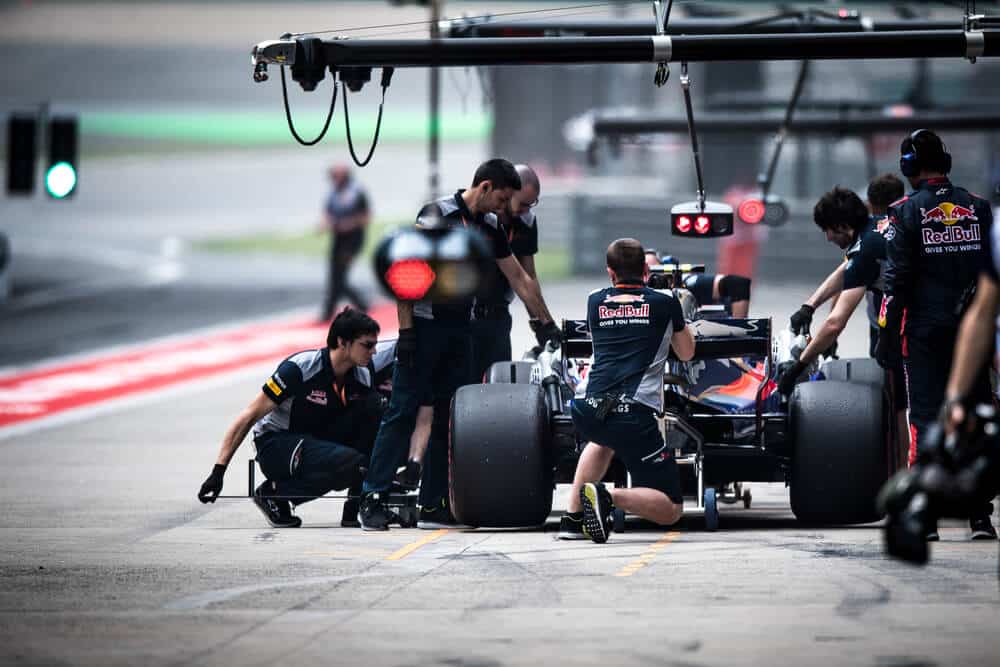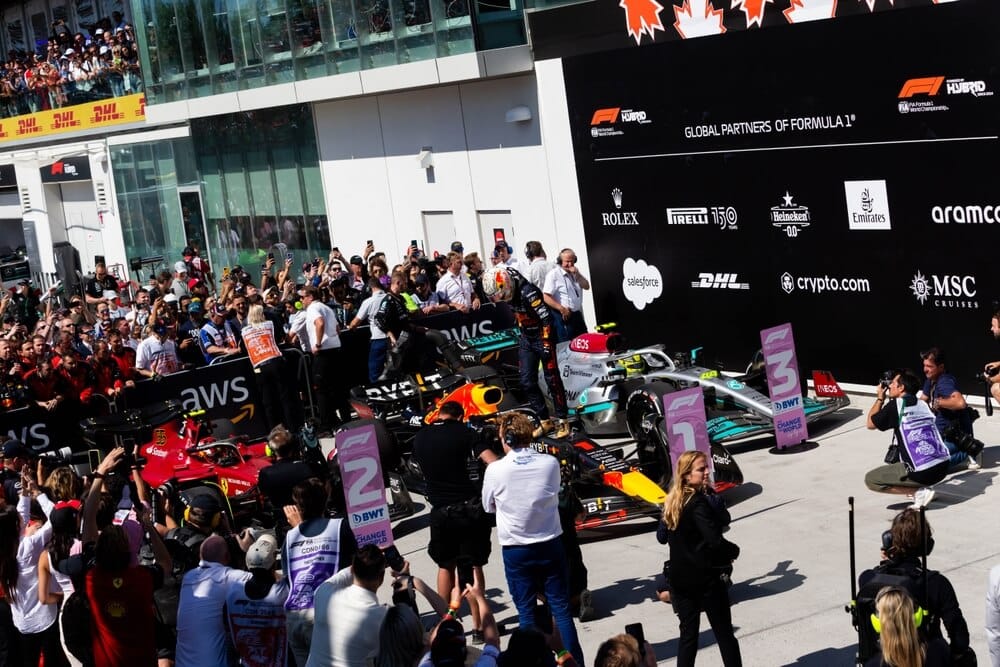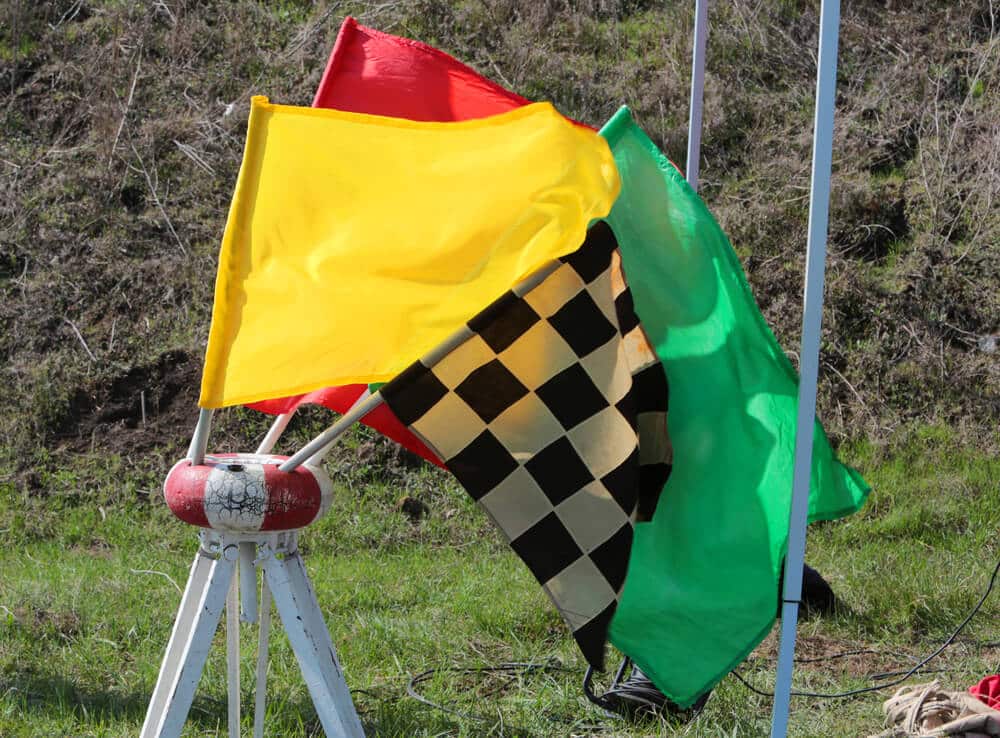F1 is a very intense and demanding sport. It’s not for the faint hearted, as there are hefty penalties if you step out-of line or break any rules!
One of the most common penalties given out during a race is the drive-through penalty that can be given for a variety of reasons, from speeding in the pit lane to causing a collision on the track.
So, what is a drive-through penalty in F1? How does it work, and what are the consequences for drivers who receive one? In this blog post, we’ll answer all those questions and more.
So if you’re curious about drive-through penalties in F1, keep reading!
Table of Contents
Watch this to learn more about different penalties in F1.
What is a drive-through penalty in F1?
A drive-through penalty is a punishment handed out to a driver during a race for breaking rules or committing an infraction. The driver must drive through the pit lane at reduced speed before rejoining the track.
It’s worth noting that a drive-through penalty is different from a stop-go penalty. A stop-go penalty requires the driver to come to a complete stop in their pit box for 10 seconds before being able to rejoin the race. Moreover, drive-through penalties are usually given out for less serious offenses than stop-go penalties.
The main consequence of a drive-through penalty is that it costs the driver valuable time as they have to drive through the pit lane at reduced speed. This can often mean that the driver will lose several positions in the race as a result of the penalty.
Key takeaways
Here are some key aspects that you should know about drive through penalties in F1:
- A drive-through penalty is when a driver has to enter the pit lane and drive through it at a reduced speed limit
- The driver must then exit the pit lane and rejoin the race
- The drive-through penalty is usually given out for minor offences, such as speeding in the pit lane or causing a collision

How to serve a drive through penalty
Now that we know what a drive through penalty is, let’s take a look at how it’s actually served.
The driver serves his penalty by driving through the pit lane
When a driver is given a drive through penalty, they must serve the penalty by driving through the pit lane at a reduced speed. This usually means that the driver will lose several positions, as they are not able to compete at the same speed as the rest of the field.
Moreover, the driver must be careful not to exceed the speed limit in the pit lane, as this would result in an additional penalty. The last thing a driver wants is to compound their mistake by picking up another penalty!
However, serving a drive through penalty is still preferable to other penalties that can be given, such as a stop-and-go or disqualification.
Much better than a stop and go penalty
As we’ve mentioned, a drive through penalty is usually given out for less serious offences than a stop-go penalty. A stop-go penalty requires the driver to come to a complete stop in their pit box for 10 seconds before being able to rejoin the race.
This often happens when a driver commits a more serious offence, such as speeding in the pit lane or causing a collision. In these cases, the drive-through penalty is seen as a more lenient punishment.
Now, there are several reasons why a drive-through penalty is seen as a more lenient punishment than a stop-go penalty. Firstly, the driver does not have to come to a complete stop in their pit box, which means they can serve the penalty and rejoin the race much quicker. Secondly, the driver is able to keep racing at a reduced speed, which means they are less likely to lose positions as a result of the penalty.
Of course, the main downside of a drive-through penalty is that it still costs the driver valuable time and they may lose several positions in the race. However, overall it is seen as a more lenient punishment than a stop-go penalty.
When does a driver receive a drive-through penalty?
There are a number of different offences that can result in a drive-through penalty. Here are some of the most common infractions that will result in a driver being given a drive-through penalty:
1. Speeding in the pit lane
One of the most common offences that results in a drive-through penalty is speeding in the pit lane. This is when a driver exceeds the speed limit in the pit lane, which is usually 60 km/h.
By speeding in the pit lane, the driver increases the chances of both crashing and causing a collision hence they maybe given a drive-through penalty.
2. Ignoring flags and rules
Another common offence that results in a drive-through penalty is ignoring flags and rules. This can happen when a driver ignores a red light or fails to slow down for a yellow flag.
This offence is punished severely because it puts the safety of both the driver and the other drivers at risk. By ignoring flags and rules, the driver increases the chances of both crashing and causing a collision.
3. Corner cutting
Corner cutting is when a driver takes a turn in a way that is not allowed by the rules. This can happen when a driver goes off the track and then rejoins, or when they take a shortcut through a chicane.
This offence is punished because it gives the driver an unfair advantage over the other drivers. By taking a shortcut, the driver is able to gain an advantage that they would not have had if they had followed the rules.
4. Blocking unfairly
Blocking is when a driver deliberately tries to stop another driver from passing them. This can happen when a driver moves across the track to block another driver, or when they brake late in order to prevent another driver from passing them.
It can also lead to a drive-through penalty. This is because it is seen as an unfair move that can cause accidents and damage to other cars.
5.Unsafe pit release
An unsafe pit release is when a driver leaves the pit lane without following the safety procedures. This can happen when a driver fails to stop at the stop line, or when they leave the pits before the green light has come on.
By leaving the pits early, the driver puts themselves and the pit crew at risk of being hit by another car. Hence, the driver may be given a drive-through penalty as a result.
When a driver is given a drive through penalty, they must serve the penalty by driving through the pit lane at a reduced speed. This usually means that the driver will lose several positions, as they are not able to compete at the same speed as the rest of the field.
Frequently asked questions about slipstream
How do drive-through penalties work?
Do you lose any points with a drive-through penalty?
How much time do you lose with a drive-through penalty?
Conclusion
Drive-through penalties are a common punishment for offenses during a race. They are usually given for offenses that pose a risk to the safety of the driver or the other drivers on the track. The penalty typically costs the driver around 20-30 seconds.
However, this may vary depending on the length of the pit lane and the speed limit. Next time you’re watching a race, pay attention to see if any drive-through penalties are given out!
Learn more about Formula One
Want to learn more about F1? Then visit our Formula 1 glossary and dictionary.



